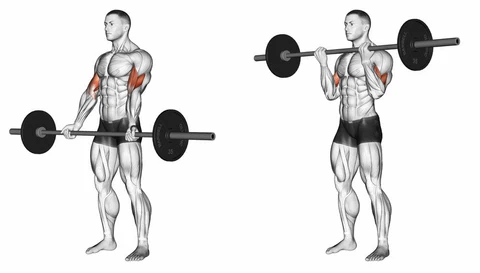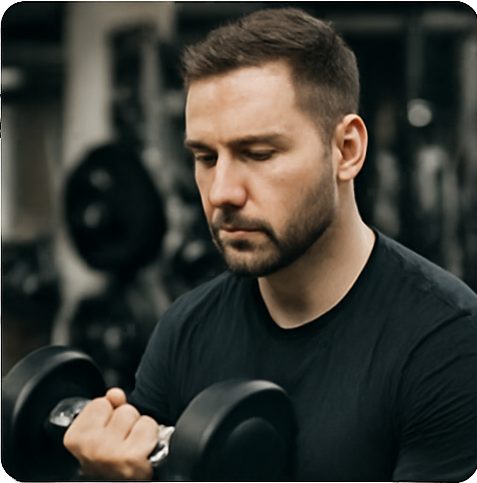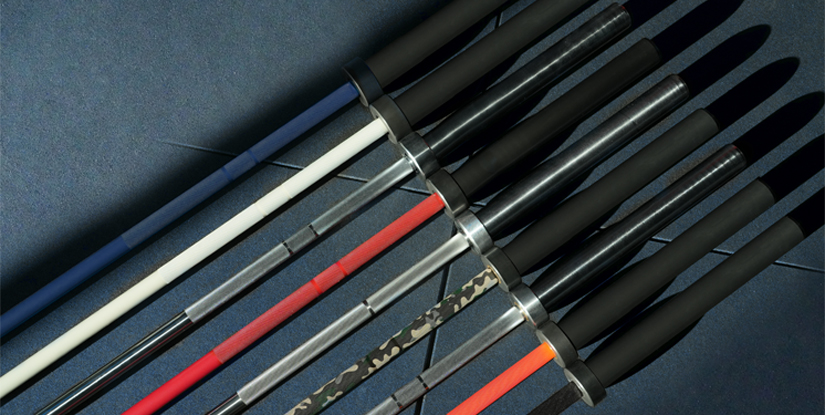The first time I tried a barbell bicep curl wide grip, I thought, “This feels weird—am I doing it wrong?”
I’d always done curls with a standard grip. Grab the bar, stand tall, curl it up. Easy, right? But then people at the gym started saying things like, “Wide grip hits the outer head” or “Close grip builds the peak.” That got me thinking.
So, I started messing around with grip widths—wide, shoulder, close—and yeah, the difference was real. Some felt stronger. Some felt awkward. And a few seriously lit up parts of my arms I’d never noticed before.
If you’re in a commercial gym and chasing real bicep growth, grip actually matters. Here’s what I figured out about going wide—and why it might be worth adding to your arsenal.
How to Do a Wide Grip Barbell Bicep Curl
So what even is a barbell bicep curl wide grip? Basically, it’s just a curl where your hands sit wider than your shoulders—usually by a few inches. It shifts the focus slightly, hitting the outer head of the biceps more. It also gives a different stretch and feel at the top.
That said, I learned the hard way: if you’re sloppy with form or go too heavy too fast, your wrists are gonna hate you.

Here’s how I do them now:
- I set my grip a few inches wider than shoulder-width. Not crazy wide—just enough to feel different.
- I always keep my elbows locked in tight—no flaring out allowed, seriously.
- I go full control—no swinging, no momentum. If I have to cheat it up, I drop the weight.
- I stay locked in at the wrists. If I start feeling a weird pinch or strain, I’ll lighten the load or swap in an EZ barbell.
- And most importantly—I slow down on the negative. That’s where the magic happens.
Once I dialed in the form, this variation started feeling way more natural—and way more effective. Especially in a commercial gym where equipment and plates are solid, there’s no excuse not to get it right.
What Muscles Are You Actually Hitting?
So, when I first started messing with the barbell bicep curl wide grip, I was tryna figure out what muscles were actually firing. Like, what’s the point of changing grip if the muscles don’t care, right?
Primary Muscle Group:
- First off, this move smashes the biceps brachii—specifically the short head. That’s the inner part of your bicep, closer to your chest. When I widened my grip, I could actually feel that different stretch. It’s subtle but real.
Secondary Muscle Groups:
- Forearms were definitely working, mostly just to stabilize the bar.
- I also felt it in the brachialis—that deep muscle between the biceps and triceps. It’s lowkey, but adds thickness to your arms.
- And yeah, even the front delts (shoulders) kicked in slightly, especially if I wasn’t super strict with form.
So yeah, it’s still a biceps movement—but with a little more team effort from nearby muscles.
Should You Be Doing Wide Grip Curls?
If you’re already doing barbell curls and your biceps gains have hit a wall, switching to a barbell bicep curl wide grip is honestly worth a shot. That small tweak changes the feel of the whole lift.
Honestly, wide grip felt kinda off at first—like I wasn’t as strong or something. But after a few weeks, I could totally feel my inner biceps firing up like never before.That move helped me smash through a plateau I didn’t even know was holding me back.
Now, if your wrists are giving you grief, don’t force it. Try an EZ bar, or just widen your grip a little at a time. No need to go full wingspan right away.
In the end, what really worked for me was switching it up—wide, shoulder-width, and close grips all cycled through. Keeps things fresh, ya know? Keeps things fresh and hits your arms from all angles.
Wide Grip vs Shoulder vs Narrow – And Why I Use All Three
When I first started curling at my gym, I thought all barbell curls were the same. Just grab and go, right? But once I tried switching up my grip—wide, shoulder, narrow—I realized each one feels different and hits my biceps a little differently too.
Here’s a quick breakdown:
| Grip Style | Hand Position | Main Focus |
|---|---|---|
| Wide Grip | Outside shoulder width | Hits the short head more (inner biceps) |
| Shoulder Width | Standard/neutral | Balanced activation (both heads) |
| Narrow Grip | Inside shoulder width | Hits the long head more (outer biceps/peak) |
None of them are wrong. But depending on what part of your biceps you wanna target, the grip definitely makes a difference.
Should You Rotate Grips?
Absolutely. I used to stick with shoulder-width curls because they felt “normal.” But once I started mixing in wide and narrow grips, I noticed real changes—especially in definition.
Rotating grips hits your arms from new angles and keeps your muscles guessing. It’s a simple switch, but it helps bust through plateaus.
Personally, I like to stick with one grip style for 3–4 weeks before switching things up. It keeps training fun and helps target different areas of the biceps. The wide grip barbell bicep curl isn’t some magic trick, but when used right, it’s a great addition.
Related articles:
6 Bicep Curl Variations Boost Arm Size and Strength
7 Best Bicep Dumbbell Exercises Built My Arms
Why Reverse Barbell Curl Biceps Workouts Hit So Hard
Barbell Curl vs Dumbbell Curl: Difference for Biceps Growth
Are Fat Grip Barbell Curl Worth It for Biceps?
Seated Barbell Bicep Curl: How I Fixed My Form Fast
FAQs about Barbell Bicep Curl Wide Grip
A wide grip bicep curl primarily targets the outer part of the biceps, helping to enhance arm width and definition. By increasing the distance between your hands on the barbell, the wide grip changes the angle at which the muscles are engaged. This variation focuses more on the long head of the biceps, helping to develop the outer biceps more effectively compared to a standard or narrow grip curl. Additionally, the wide grip requires more stabilization, which can help activate the shoulder and forearm muscles, improving overall upper body strength. This type of curl is also effective in promoting muscle growth by challenging the biceps with a different range of motion, leading to enhanced muscle hypertrophy and strength gains. For those seeking balanced arm development, the wide grip curl can be an excellent addition to any workout routine.
The best grip for bicep curls depends on your specific goals and which part of the biceps you want to emphasize. A standard or shoulder-width grip is the most common and targets both the long and short heads of the biceps equally. However, the wide grip bicep curl is an excellent choice if you are looking to specifically target the outer biceps or increase the width of your arms. A narrow grip, where the hands are closer together, focuses more on the inner biceps. Additionally, using a supine (underhand) grip, as seen in hammer curls, can also help engage the brachialis and forearm muscles, improving overall arm strength. Ultimately, the best grip depends on your individual goals. Incorporating variations in your training can lead to more balanced and comprehensive bicep development.
When performing a barbell bicep curl wide grip, the hands should be positioned slightly wider than shoulder-width apart. This position ensures that the focus shifts toward the outer biceps and engages the long head of the biceps more effectively. The exact width of the grip can vary slightly depending on your body type and flexibility, but it should generally not be so wide that it becomes difficult to maintain control of the barbell or causes discomfort. A good guideline is to position the hands at about 1.5 to 2 times the width of your shoulders. This width will allow you to perform the exercise with proper form while maximizing the activation of the biceps. If the grip feels uncomfortable, adjust it slightly to a position where you can maintain a full range of motion while minimizing strain on your wrists and shoulders.
A wide grip bicep curl is generally better for targeting the long head of the biceps rather than the short head. The short head is located on the inner part of the biceps, and it is most effectively worked when the arms are in a narrow grip or close to the body. A wide grip focuses more on the outer part of the biceps and the long head, which helps increase the overall width and shape of the arms. However, both the long and short heads contribute to biceps strength and size, so including a variety of grip positions in your training is key to achieving balanced arm development. While the wide grip may not be the most effective for isolating the short head, it still plays a valuable role in promoting overall muscle growth and strength.

Hi, I’m the editor here at Leadman Fitness. We’re a manufacturer focused on producing top-quality barbells, plates, kettlebells, dumbbells, and strength training gear. I’ve been into sports and fitness for years, and I know my way around all kinds of gym equipment—both from using it and helping create it.
I spend a lot of time understanding the real problems people run into in the gym—whether it’s beginners trying to pick the right gear or experienced lifters looking for something more durable. I stay in close touch with our production team and talk directly with other equipment makers, so we’re always improving based on what real lifters and coaches are looking for.
What I share comes from hands-on experience—stuff that actually helps people train better, not just in theory, but in real gyms.
